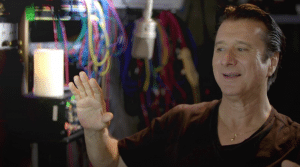The Top 10 Things We Did In The ’80s We Can’t Do Today

via Thames News / YouTube
Nostalgia can be a powerful feeling, and for those who lived through the 1980s, there are many pastimes and habits from that era which are obsolete or frowned upon by today’s standards. Here’s a look at ten such activities that were commonplace in the ’80s but have since faded into history.
Renting Movies at Video Rental Stores
View this post on Instagram
The ritual of visiting video rental stores was more than just about renting movies; it was a communal activity that often dictated the weekend’s entertainment. Families and friends would spend time together, browsing through rows of VHS tapes, debating over which movies to pick. This experience provided physical interaction with media in a way that digital streaming, despite its convenience and vast selection, doesn’t replicate. The thrill of discovering a movie on a shelf, the disappointment of finding out a popular title was already checked out, and the tangible connection to cinema are all cherished memories from the ’80s that have no direct equivalent today.
Calling Collect
View this post on Instagram
Calling collect was a common practice for those who needed to communicate over long distances without incurring immediate charges. It allowed the caller to place a call at the recipient’s expense, a useful option in situations where one couldn’t afford to make the call otherwise or when payphones were the primary means of public telecommunication. The process involved dialing the operator and requesting a collect call, which then required the recipient to agree to pay for the connection before it could proceed. This method of communication carries with it memories of urgency or necessity, often used by students or travelers to inform family members of their wellbeing without the burden of cost.
Smoking Inside Public Venues
The image of people smoking indoors, whether in an airport, office, restaurant, or bar, is a striking illustration of how societal norms have shifted. During the ’80s, smoking was not only permitted but normal in many indoor public spaces, a stark contrast to today’s stringent no-smoking policies. These changes reflect growing awareness of health risks associated with smoking, not just for the smoker but for those exposed to secondhand smoke. The transformation in public health attitudes has led to cleaner, smoke-free environments in almost all indoor public places, marking a significant shift from the smoke-filled rooms of the ’80s.
Acquiring Music and Videos on Tape
View this post on Instagram
Cassettes and VHS tapes represent an era where owning a physical copy of music or a movie was a treasured possession. Fans would eagerly anticipate the release of new albums or films on tape, often lining up at stores to secure their copy on the day of release. This tangible relationship with media is fundamentally different in today’s digital landscape, where streaming services offer instant access to vast libraries of content without the need for physical storage. While convenient, this shift has altered the way consumers interact with and value their media collections.
Getting Tripped By Phone Cords
View this post on Instagram
Before the widespread adoption of cordless phones and cellphones, traditional landline telephones with long, twisting cords were a staple in nearly every home. These cords, necessary for connecting the handset to the base unit, often snaked across living areas, creating inadvertent trip hazards. The common occurrence of getting tripped up by phone cords was not only a source of mild annoyance but also a quirky reminder of household life in the ’80s. It symbolized a time when being tethered by a physical line was the only way to have a conversation with someone not in the same room.
Using Portable Cassette and CD Players
View this post on Instagram
Portable cassette and CD players were once indispensable companions for music lovers, providing a personal soundtrack for commutes, workouts, and leisure activities. These devices required users to physically carry their music collections, often painstakingly curated on mixtapes or carefully selected CDs. The advent of digital music players and smartphones, capable of storing thousands of songs, has transformed music consumption into a less tactile but more convenient experience. The act of flipping a tape or changing a CD is a nostalgic memory for many, emblematic of a more engaged and intentional interaction with music.
Driving Without a Seatbelt
View this post on Instagram
Driving without a seatbelt, commonplace in the ’80s, is now understood as recklessly endangering. This shift reflects broader changes in societal attitudes towards road safety and the importance of preventive measures. Legislative changes and public safety campaigns have successfully ingrained the habit of buckling up as soon as one gets into a car, significantly reducing the risk of injury in accidents. The evolution from a lax attitude towards seatbelts to one of mandatory compliance underscores a general trend towards prioritizing safety and well-being.
Hitting the TV for Better Reception
View this post on Instagram
The act of physically adjusting a TV set, often by smacking it, to improve reception seems almost comical now. In the ’80s, fiddling with antennas or giving the TV a good thump was a common strategy to battle fuzzy screens and ghosting images. Today’s digital television technology, with its clear, stable signals, makes such physical interventions unnecessary and obsolete. The shift from analog to digital broadcast technology has not only enhanced picture and sound quality but also eliminated the need for viewers to physically intervene to improve their viewing experience.
Sitting in the Back of Pickups on the Highway
View this post on Instagram
Riding in the back of a pickup truck represents a freedom and casualness towards road safety that is no longer permissible under current laws. What was once considered a fun and normal practice, especially in rural areas, is now recognized as unsafe and illegal in many places. This change demonstrates a greater societal commitment to safety measures and the recognition of risky behaviors that were previously overlooked or accepted.
Being Unfettered by Mobile Phones
View this post on Instagram
The luxury of being fully present and attentive without the distraction of a smartphone was the norm in the ’80s. Today, the omnipresence of smartphones and the constant connectivity they provide have created a new form of distraction that permeates almost every aspect of daily life. While these devices offer unparalleled convenience and access to information, they also challenge our ability to engage fully with the world around us. The ’80s offer a reminder of a time when distractions were fewer, and moments of undivided attention were more common.


















